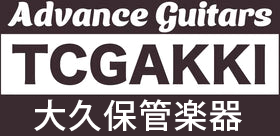There are many different styles of music. There is the royal road band sound, neutral rock with a unique atmosphere and a mysterious sex appeal, heavy metal with a heavy bass sound and a denim and leather look, R&B and hip-hop that are now played on the streets as a matter of course, blues with a lot of tears in its roots, jazz, bossa nova, etc., to name a few. The list is endless.
However! When considering the essence of music and musical instruments, there is the most primitive part that all of them have in common. That is... live sound! So, although this is a bit of a forced approach, I would like to help those who are just starting out with the most popular live instrument, the acoustic guitar, which has a stable popularity and a large player population among live instruments that do not require an amplifier, etc., by showing you how to choose one.
If you are a beginner, you may be thinking, "I want to play the acoustic guitar! However, many people often say, "I've been playing electric guitars for a long time, but I don't know much about acoustic guitars..." As a band member, I have heard that "MTV amps are the best for acoustic guitars" and "MTV amps are the best for acoustic guitars. As a band member, many of you may want to start playing the acoustic guitar because of the calm acoustic sound, which is in contrast to the hard rocking sound of Eric Clapton, Aerosmith, KISS, Paul Weller, Nirvana, etc. on "MTV Unplugged". I am sure there are many people who would like to start playing the acoustic guitar because of such a stage.
Many people may want to start playing the acoustic guitar because of its calm acoustic sound, in contrast to the blistering rock music that is often seen on the streets. Finger picking that can be used for a wide range of playing, sometimes subtly, sometimes boldly. The classical guitar, with its soft tone and lyrical melodies... The acoustic guitar has many appealing styles. Now, let's take a look at some of the styles, from the beginner who is agonizing between hope and anxiety, "I'm new and I don't know anything..." to the shy, "I'm too embarrassed to ask now! Let's start our journey together to choose your first acoustic guitar.
